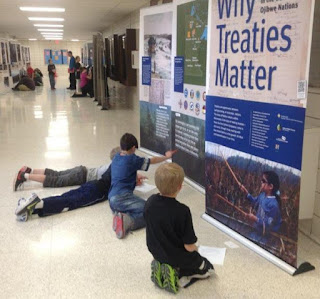 David O’Fallon, Ph.D., is the President of the Minnesota Humanities Center. His vision for the Humanities Center is to transform education and find common ground to renew and strengthen our democracy through key work with partners. Prior to taking over as President of the Humanities Center, Dr. O’Fallon served as President of the MacPhail Center for Music, Executive Director of the Perpich Center for Arts Education, and Director of Arts in Education for the National Endowment for the Arts.
David O’Fallon, Ph.D., is the President of the Minnesota Humanities Center. His vision for the Humanities Center is to transform education and find common ground to renew and strengthen our democracy through key work with partners. Prior to taking over as President of the Humanities Center, Dr. O’Fallon served as President of the MacPhail Center for Music, Executive Director of the Perpich Center for Arts Education, and Director of Arts in Education for the National Endowment for the Arts.
Earlier this summer, I had the opportunity to spend a week with educators in Tampa/St. Petersburg and then in Orlando, Florida.
Let’s start with this premise: a school is first of all, a human community, a gathering of people, young and old. It is not a system to be ruthlessly made more efficient.
In the Museum of Fine Art in St. Petersburg, some 30 art and music educators gathered. People who carry the arts in the schools of Pinellas County and across Florida — caring for students in a highly stressed system — find openings for imagination, for the creative spirit, and for the capacities, skills, and passions of life that go beyond the exams.
The Tampa/St. Pete group tallied up their years of experience; over 350 years in that room — 350 years of learning, of educating young people in their charge as they dealt with a system of education undergoing years of stress. How many young people? In a given week the people in that room reach, connect with, inspire, wonder about, and engage over 10,500 people. Pause with me a moment
; 350 years of experience, 10,500 young men and women — each week!
In Orlando, I spoke with educators who sought ways to advocate more effectively for the arts. In a system increasingly test-stressed and tight with time, can more room be found for music, art, dance, and the humanities?
At each gathering I found a hunger for the human community to be recognized as the soul of education itself — the need for us to be in relationship with each other as the foundation of learning.
That is the work of our Minnesota Humanities Center.
The humanities bring a deep aquifer of resources to this hunger. The arts and humanities aren’t just subjects; they are a powerful means of engaging the world. The system of education we have now was created some 150-200 years ago to serve the needs of society in the midst of the Industrial Revolution. Now we need a new system — for different purposes. We imagine what must be created; we manage what exists. We care for the people within — and for each other. As someone once said, “be hospice workers for the old, midwife the new.”
The humanities and the arts are uniquely positioned and equipped to do this. I took heart from the people in Orlando and Tampa/St. Pete, from their intelligence, expertise, and commitment to reaching each child — as a person — to help build and maintain a thriving human community, which is the mission of the Minnesota Humanities Center.



 Marty Case works with Allies: Media/Art, researching the networks of people and businesses that represented the U.S. in treaties with American Indian groups. His work challenges the “master narrative” that shapes many assumptions about U.S. history and identity. He has also worked as Director of Development and Planning for a state-wide arts organization, and as writing and planning consultant to 45 widely diverse organizations in the fields of art, culture, education, social service, religion, and politics.
Marty Case works with Allies: Media/Art, researching the networks of people and businesses that represented the U.S. in treaties with American Indian groups. His work challenges the “master narrative” that shapes many assumptions about U.S. history and identity. He has also worked as Director of Development and Planning for a state-wide arts organization, and as writing and planning consultant to 45 widely diverse organizations in the fields of art, culture, education, social service, religion, and politics. David O’Fallon, Ph.D., is the President of the Minnesota Humanities Center. His vision for the Humanities Center is to transform education and find common ground to renew and strengthen our democracy through key work with partners. Prior to taking over as President of the Humanities Center, Dr. O’Fallon served as President of the MacPhail Center for Music, Executive Director of the Perpich Center for Arts Education, and Director of Arts in Education for the National Endowment for the Arts.
David O’Fallon, Ph.D., is the President of the Minnesota Humanities Center. His vision for the Humanities Center is to transform education and find common ground to renew and strengthen our democracy through key work with partners. Prior to taking over as President of the Humanities Center, Dr. O’Fallon served as President of the MacPhail Center for Music, Executive Director of the Perpich Center for Arts Education, and Director of Arts in Education for the National Endowment for the Arts. Meryll Levine Page served on the board of Minnesota Humanities Center from 2004-2012. Following her tenure on the board, she served as a consultant, drawing on her thirty-nine years of teaching experience. Meryll also blogs at:
Meryll Levine Page served on the board of Minnesota Humanities Center from 2004-2012. Following her tenure on the board, she served as a consultant, drawing on her thirty-nine years of teaching experience. Meryll also blogs at: